
A nebulizer is a medical device that turns a medicine into an aerosol and promotes its rapid transportation to respiratory organs: the lungs and the bronchi. It is used for acute respiratory infections and chronic diseases of the respiratory tract, facilitates breathing, moisturizes the mucous membrane, relieves swelling, dilutes mucus and sputum. There are three types of nebulizers: compression, ultrasonic, electron-mesh( mesh-nebulizers), differing in the way the formation of therapeutic fog. In this article, we will discuss the first type of apparatus and talk about how their application is effective in treating children.
Contents
- 1 Principle of operation and technical specifications of the
- 2 device Indications for use and expected results
- 2.1 What is the effectiveness of nebulizer therapy?
- 3 Solutions for use
- 4 Price
- 5 How to choose?
Functional principle and technical characteristics of the
The compressor nebulizer is a portable device consisting of a compressor, a nebulizer chamber and an air tube. In the case of the compressor there is also a built-in tank, intended for filling with a suitable medicinal solution, which, subsequently falling into a nebulizer chamber, is transformed into a fine-dispersed fog. The device is equipped with a mouthpiece for inhaling the medicine through the mouth and a mask designed to receive particles through the nasal passages.
In the photo - the inhaler compressor:
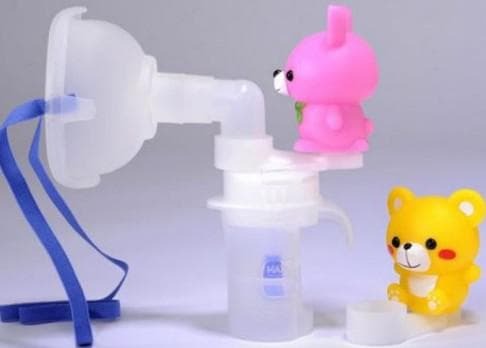
Aerosol in this kind of nebulizers is formed due to the work of the compressor - hence the name of the device. This feature has pluses and minuses: the first relates to the versatility and simplicity of the device, as well as the next of this low price, and to the second - large sizes, noise, the ability to work only from the power grid, which worsens its portable characteristics.
Indications for use and expected results
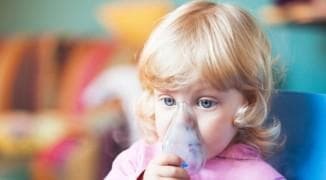
Inhalation therapy with the use of compression nebulizer is indicated in the following diseases:
- of larynx( sore throats, pharyngitis, laryngitis);
- Rhinitis( allergic, vasomotor, chronic), What are the symptoms of purulent rhinitis, is indicated in this article.
- bronchial asthma;
- viral, bacterial, obstructive bronchitis;
- adenoids;How to use thuja oil for adenoids for children is indicated in the article.
- pneumonia.
The use of the device allows to solve the following tasks:
- to relieve spasm of the bronchi;
- strengthen local immunity;
- to eliminate swelling of the respiratory system;
- sanitize the surface of the larynx, trachea;
- to accelerate sputum liquefaction in the bronchi;
- neutralize the effects of allergens;
- saturate the lungs and bronchi with drugs that help them to heal quickly.
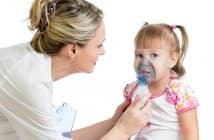 How the rhinitis in children is treated with an inhaler is indicated in the article.
How the rhinitis in children is treated with an inhaler is indicated in the article.
Which inhaler is better to buy ultrasonic or compressor, is specified in the article.
In the article you can see the photo of the ultrasonic inhaler indicated in the article: http: //prolor.ru/g/lechenie/ ultrazvukovoj-ingalyator-dlya-rebenka.html
On the video - inhaler compressor for children and adults:
What is the effectiveness of nebulizer therapy?
First of all, it is built on the specifics of acute respiratory viral infections, the treatment of which requires the obligatory effect of medicines on the immediate site of infections. The smallest particles formed in the compression nebulizer are able to convey useful substances to such remote sites as the alveoli and bronchioles. Mom's comments on the compressor inhalers indicate that their use contributes to the speedy recovery of the child in ARVI, and also helps in caring for babies suffering from obstructive bronchitis.
for video compression inhaler for children:
Solutions for use
Compression inhaler is the most versatile inhalation device that allows the use of a wide range of drugs: antibiotics, mucolytics, corticosteroids, anesthetics, bronchodilators. The design of the device also allows for inhalation with solutions of medicinal herbs, but this can only be done with the permission of the doctor. Such a plus, as the naturalness of the gifts of nature, is often compensated by their high allergenicity, so the use of herbs can cause the opposite effect to the expected.
The most popular solutions for nebulizer therapy in the treatment of children are:
| Drug group | Name |
| Expectorants | Salamon, Fenoterol, Berotek, Ventolin, Magnesium sulfate, Astalin, Atrovent, Ventolin, Salbutamol, Fenoterol, Ipratropium armourite |
| Mucolytic agents | Ambrohexal, Lazolvan, Fluimutsil, Ambroxol, Aulmozim, Acetylcysteine |
| Antibacterial preparations | Tobramycin, Gentamicin, Fluimutsil, Amikacin |
| Antiseptic drugs | Furacilin, Dioxydin, Yoinol, Dioksidin, Chlorhexidine |
| Analgesics | lidocaine |
| Hormones | kromogeksal, budesonide, Pulmicort |
| Immunomodulators | Interferon |
| Combination preparations | Berodual, Fenoterol |
| Saline solutions | Aqua Maris, Sahlin, Marimer, Sodium |
chloride is allowed to use in the compression inhaler mineralwater, such as Borjomi, Staraya Russa, Essentuki, Narzan. The properties of mineral water can soften cough, promote liquefaction and separation of sputum from the bronchi, neutralize the effects of pneumonia and bronchitis, curing them without complications. The undeniable advantage of mineral waters is the absence of side effects, so that they can be treated even by the smallest patients. 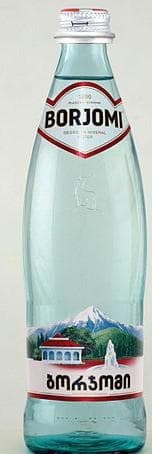
With regard to the use of oil solutions in the nebulizer, the question is still quite debatable to this day. The further, the more doctors are inclined to the opinion that this is permissible only when it comes to atrophic processes( atrophic pharyngitis, laryngitis, tonsillitis).In this case, oils have a soothing, protective, restoring effect, contribute to the saturation of the mucous membranes. 
Vegetable oils: sea-buckthorn, peach, eucalyptus, almond, rosehip oil, chlorophyllite are very suitable for this purpose. In all other cases, it is recommended to refrain from oil therapy, since it creates the danger of occurrence in the patient's bronchi of the so-called oil plugs( oleom), which impedes respiration and provokes the development of pneumonia.
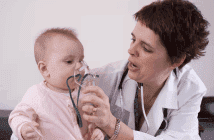 Which inhaler is better than steam or ultrasonic is indicated in this article.
Which inhaler is better than steam or ultrasonic is indicated in this article.
The article contains reviews of the inhaler omron for children.
What is the best inhaler for children and what kind of reviews can be seen here: http: //prolor.ru/g/lechenie/ ingalyatory-dlya-detej-vzroslyx-kak-vybrat.html
Price
The prices for the most popular products in the Russian online stores:
| Name | Particle size | Price |
| Little Doctor LD-210C | 3 microns | 2540-2920 р. |
| Super Eco | 4 microns | 3110-3750 p. |
| B.Well WN-115K | 3 microns | 3250-3560 p. |
| CX Aero Kid | 5 micron | 3350-3840 p. |
| NebAid | 2,6 micron | 3550-4100 p. |
| Med 2000 Florence | 1-10 micron | 3850-4560 p. |
| Omron СompАre NE-C24-E Kids | 3 microns | 4250-4560 р. |
| Omron СompАre NE-C28-E | 3 microns | 5150-5530 р. |
How to choose the right one?
How to choose the best one? When choosing a compressor inhaler for a child, it is worth paying attention to the following factors:
- Particle size is one of the most important points on which depends on how deeply medicinal substances can penetrate;
- noise level - despite the fact that all compressor nebulizers are noisy, it is advisable to choose as quiet as possible to be able to use it during the child's sleep;
- complete - the kit must contain a children's mask for inhalation;
- price / quality ratio - it is often better to stay on an average price category device - in terms of its technical characteristics it can not be inferior to expensive devices;
- design - many children's nebulizers have the form of toys or animals, which helps parents to distract the baby during the procedure.
The video describes how to use a compression inhaler:
A properly selected compressor nebulizer will serve for a long time and will help to rid the child of such unpleasant symptoms as cough, runny nose and sore throat.
